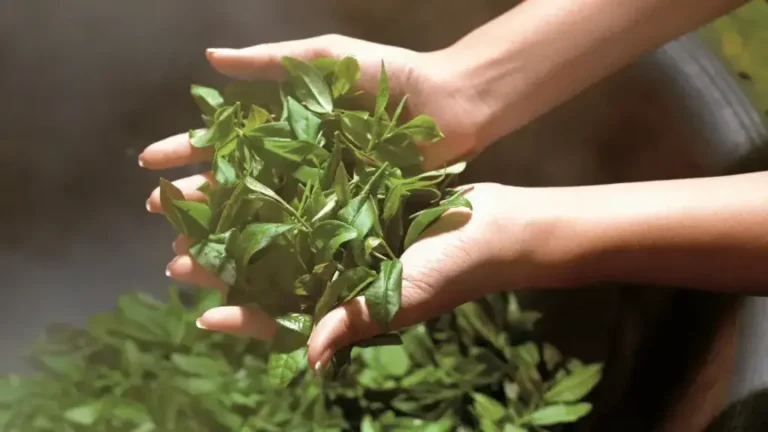Tea is one of the most widely consumed beverages worldwide, cherished for its rich flavor, aroma, and potential health benefits. While most people are familiar with drinking brewed tea, the question arises: can you eat tea leaves?
This intriguing topic has sparked curiosity and debate among tea enthusiasts and health-conscious individuals alike.
In this comprehensive guide, we’ll delve into the world of consuming tea leaves, exploring the benefits, risks, and proper ways to enjoy this unique experience.
Can You Eat Tea Leaves? A Direct Answer
The short answer is yes, you can eat tea leaves. The tea plant, Camellia sinensis, is not toxic to humans, and consuming its leaves in moderation is generally considered safe.
However, it’s important to note that eating tea leaves comes with both potential benefits and risks, which we’ll explore in depth throughout this article.
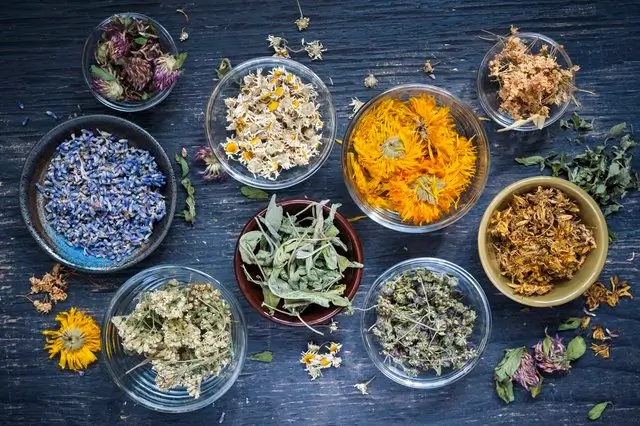
Different Types of Tea Leaves
Tea leaves can be broadly categorized into three main types: green, black, and oolong. Each type undergoes different processing methods, which can affect their nutritional content and flavor profile.
Green Tea Leaves
Green tea leaves are minimally processed, as they are heated or steamed shortly after being picked to prevent oxidation. This preserves their natural green color and delicate flavor, as well as their high concentration of antioxidants, such as epigallocatechin gallate (EGCG).

Black Tea Leaves
Black tea leaves undergo a process called oxidation or fermentation, which gives them their characteristic dark color and robust flavor. During this process, some of the antioxidants are converted into different compounds, such as theaflavins and thearubigins, which offer unique health benefits.
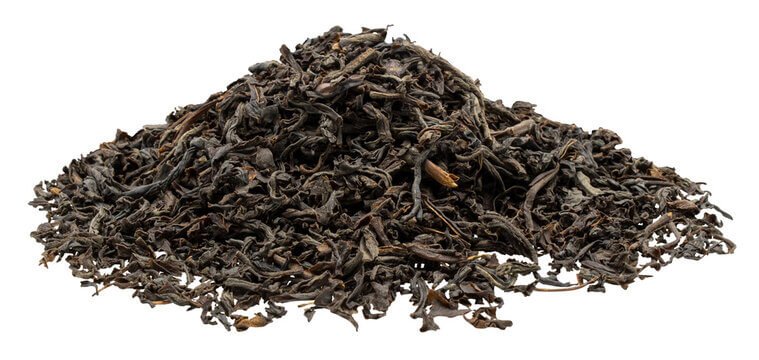
Oolong Tea Leaves
Oolong tea leaves undergo partial oxidation, resulting in a flavor and color profile that falls somewhere between green and black teas. The degree of oxidation can vary, leading to different varieties of oolong tea.
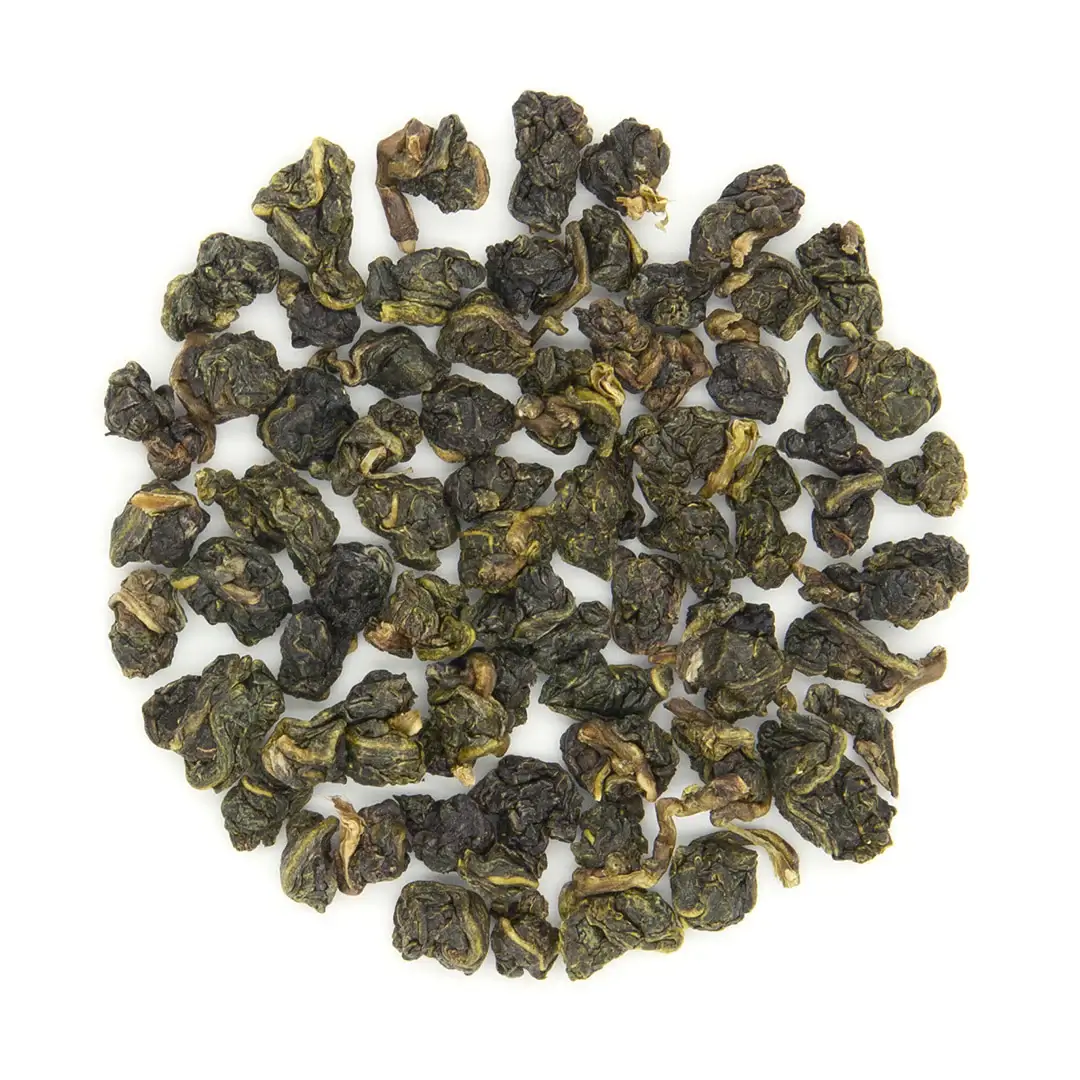
It’s important to note that the processing methods used for different types of tea leaves can affect their nutritional content and potential health benefits.
Benefits of Eating Tea Leaves
Antioxidant Powerhouse
Tea leaves are packed with antioxidants, particularly polyphenols, and catechins, which offer numerous health benefits.
By consuming tea leaves directly, you can maximize your intake of these powerful compounds, which may help reduce inflammation, improve cardiovascular health, and potentially lower the risk of certain types of cancer.
Cholesterol Reduction
Several studies have suggested that consuming tea leaves may contribute to lowering cholesterol levels. The antioxidants and compounds found in tea leaves, such as theaflavins and thearubigins, may help regulate cholesterol levels and promote overall heart health.
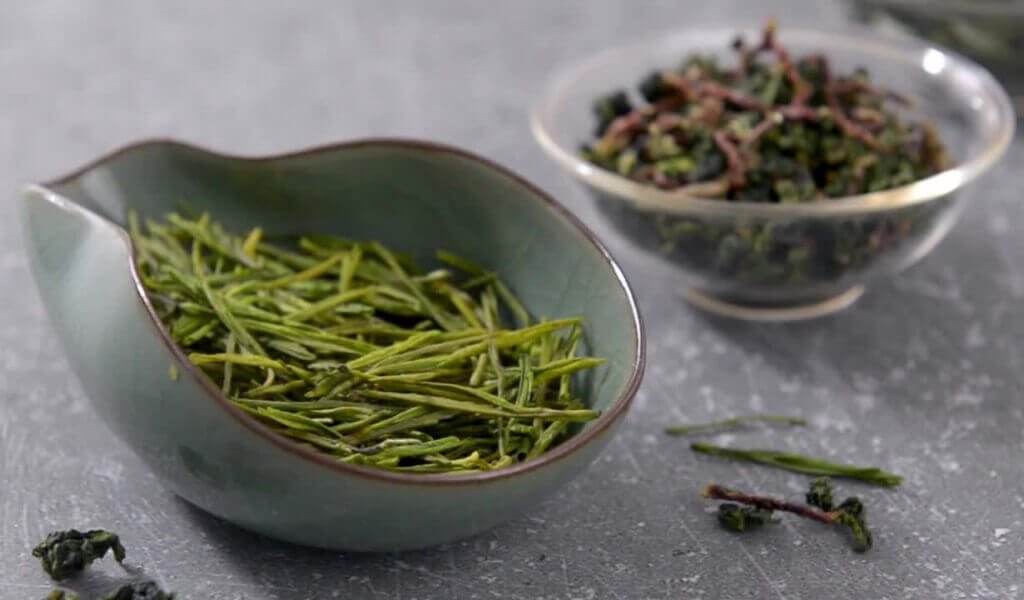
Digestive Support
Tea leaves contain compounds that can aid in digestion. The tannins present in tea leaves may help stimulate the production of digestive enzymes, promoting better nutrient absorption and overall digestive health.
Is Tea Less Acidic Than Coffee?
Weight Management
While not a magical solution, the combination of antioxidants and moderate levels of caffeine found in tea leaves can support weight management efforts. The antioxidants may help boost metabolism, while the caffeine can provide a mild energy boost and suppress appetite.
Note: More research is needed.

Potential Risks of Eating Tea Leaves
Heavy Metal Contaminants
One of the primary concerns regarding the consumption of tea leaves is the potential presence of heavy metal contaminants, such as lead, aluminum, and mercury.
These contaminants can accumulate in the leaves from the soil or environment, and excessive exposure can lead to adverse health effects.
High Caffeine Intake
Tea leaves contain varying levels of caffeine, and consuming large quantities can lead to undesirable side effects. Excessive caffeine intake may cause anxiety, insomnia, increased heart rate, and other adverse reactions, particularly in individuals sensitive to caffeine.
Digestive Issues
While tea leaves may aid digestion, they also contain tannins, which can be difficult for some individuals to digest. Consuming large amounts of tea leaves may lead to stomach pain, nausea, and diarrhea, especially if not properly hydrated.
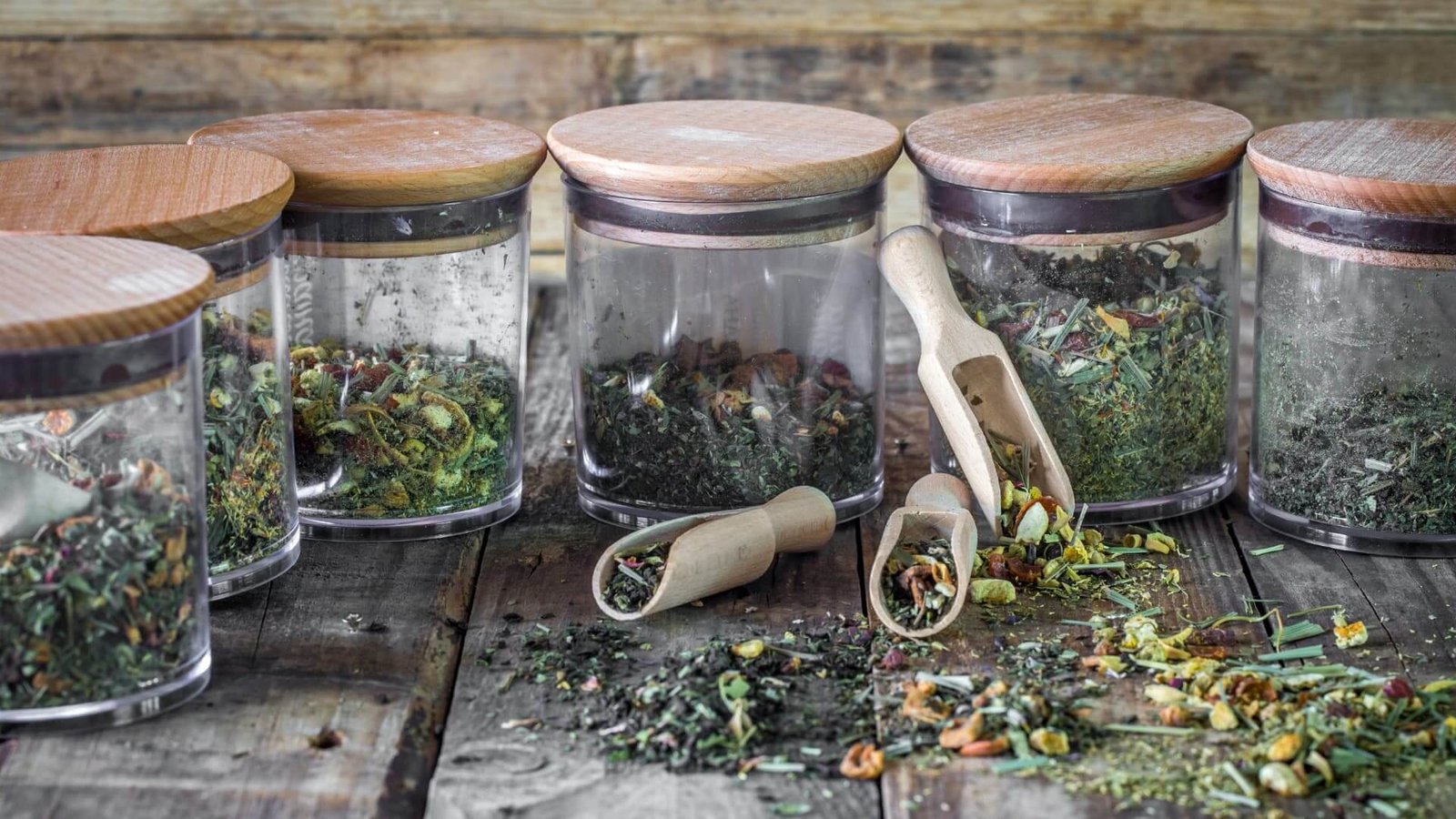
Proper Storage of Tea Leaves
To maintain the quality and freshness of tea leaves, proper storage is crucial. Here are some tips for storing tea leaves:
- Airtight Containers: Store tea leaves in airtight containers or resealable bags to prevent exposure to air, moisture, and light, which can cause oxidation and deterioration of flavor and aroma.
- Cool, Dry Environment: Keep tea leaves in a cool, dry place away from direct sunlight, heat sources, and moisture. Humidity can cause the leaves to become damp and potentially develop mold or mildew.
- Avoid Odor Transfer: Tea leaves can easily absorb odors from their surroundings, so store them away from strong-smelling substances, such as spices or cleaning products.
- Rotate Stock: If you have a large supply of tea leaves, rotate your stock to ensure you consume the oldest leaves first before they lose their freshness and flavor.
By following these storage guidelines, you can extend the shelf life of your tea leaves and enjoy their full flavor and potential benefits.
Preparation and Consumption Methods
Raw Tea Leaves
If you choose to consume tea leaves raw, it’s essential to source high-quality, respiratory-grade loose-leaf tea from reputable suppliers. Rinse the leaves with cool water and pat them dry before consuming.
You can enjoy raw tea leaves by themselves or incorporate them into salads, smoothies, or other dishes.
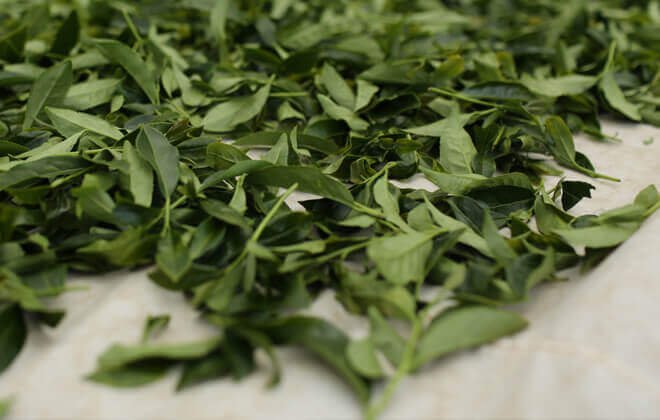
Cooked Tea Leaves
Another popular method of consuming tea leaves is by cooking them. In Japan, for example, tea leaves are often boiled and consumed after being used to make traditional green tea. This practice is believed to provide additional health benefits and utilize the leaves fully.
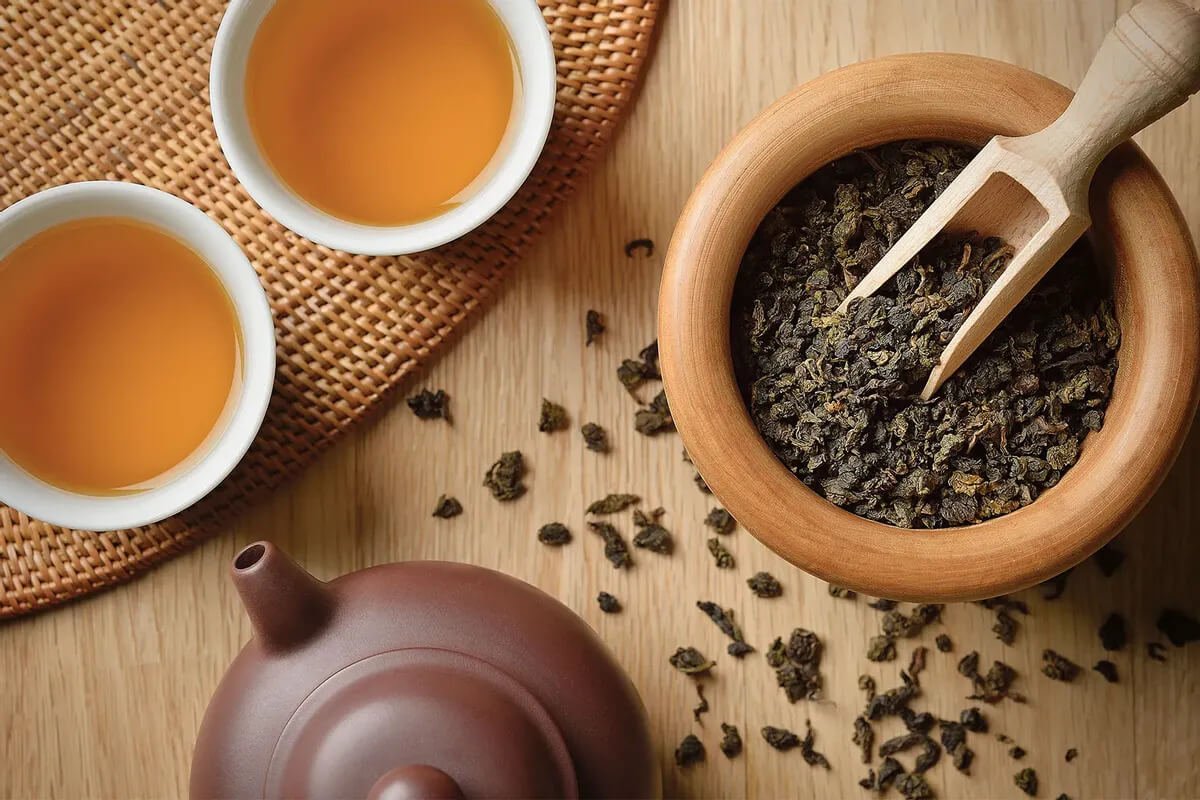
Matcha Powder
Matcha, a finely ground powder made from shade-grown green tea leaves, is a popular way to consume the entire leaf. In the traditional Japanese Tea Ceremony, matcha is whisked into warm water, allowing you to ingest the leaf in a soluble form, making it easier to digest.
What to do with Used Tea Leaves?
Historical and Cultural Significance
Eating tea leaves has a rich cultural and historical significance in various parts of the world. In ancient China, when tea was considered a luxury item, the lower classes would often consume the leaves after brewing tea to maximize their benefits.
This practice was not only a means of sustaining health but also a symbol of resourcefulness and respect for nature’s bounty.

Similarly, in certain regions of Japan, the tradition of eating tea leaves after brewing has been passed down for generations. This practice is believed to provide additional nutrients and is seen as a way to honor the tea plant and its gifts fully.
Moderation is Key
While consuming tea leaves can offer potential benefits, it’s crucial to practice moderation. Excessive consumption of tea leaves may lead to adverse effects, particularly due to the presence of caffeine and tannins.
It’s generally recommended to enjoy tea leaves as an occasional supplement to your diet rather than a daily practice.
Additionally, it’s essential to source your tea leaves from reputable suppliers and ensure they are free from pesticides, heavy metals, and other contaminants. Organic, high-quality tea leaves are the safest option for consumption.
Disclaimer
Before incorporating tea leaves into your diet, it’s advisable to consult with a healthcare professional, especially if you have any underlying health conditions, are pregnant, or are breastfeeding.
They can provide personalized guidance based on your circumstances and help you make an informed decision.
Conclusion
In conclusion, eating tea leaves is a viable option for those seeking to explore new avenues of enjoying the benefits of tea.
While it offers potential advantages, such as increased antioxidant intake, cholesterol reduction, and digestive support, it’s essential to be mindful of the risks associated with consuming tea leaves, including heavy metal contaminants, high caffeine content, and potential digestive issues.
If you choose to incorporate tea leaves into your diet, do so in moderation and with caution. Consider trying different preparation methods, such as raw, cooked, or in the form of matcha powder, to find the approach that suits your preferences and lifestyle best.
Ultimately, the decision to eat tea leaves is a personal one, and it’s essential to weigh the potential benefits against the risks. As with any dietary change, it’s always advisable to consult with a healthcare professional, especially if you have underlying health conditions or concerns.
